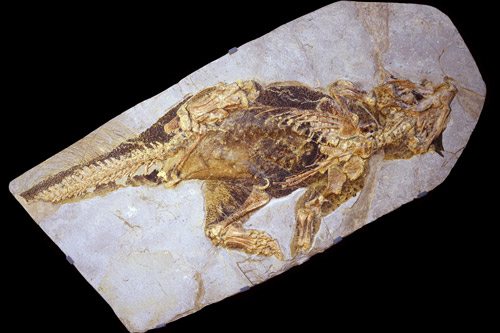3D scanning, modelling and printing has long been a great helper in archaeology. We’re reported how it is used to determine the death of Lucy, an ancient human fossil specimen found in Ethiopia in 1974.
Recently, scientists from the Univeristy of Bristol 3D modelled a Psittacosaurus, a long-lost species of dinosaurs from the inside-out. Outside refers to the life-size of this 3D model while inside refers to the countershading, or the color pattern of a Psittacosaurus. With the succussful model they made, scientists could define the environment the Psittacosaurus used to live as well as their living habits.
What’s countershading
Countershading is a form of camouflage. Countershading is the pattern of animal coloration in which an animal’s pigmentation is darker on the upper side and lighter on the underside of the body. This pattern is found in many species of mammals, reptiles, birds, fish, and insects, and has occurred since at least the Cretaceous period.
Countershading most likely served to protect Psittacosaurus – an early relative of the triceratop – against predators that use patterns of shadow on an object to determine shape, just as humans do.
Behavioural ecologist Professor Innes Cuthill and colleagues at Bristol had been exploring the distribution of countershading in modern animals. But it was no easy matter to apply the same principles to an extinct animal that had been crushed flat and fossilized.
Melanosomes
The structures were previously thought to be artifacts or dead bacteria in fossilized feathers. Later, they turns out to be “melanosomes”, small structures that carry melanin pigments found in the feathers and skin of many animals.
Researchers say that it is possible to make out the color patterns of this well-preserved Psittacosaurus by detecting the preserved melanin without the aid of a microscope.

3D model of the Psittacosaurus
Professor Innes and colleagues then teamed up with local palaeoartist, Bob Nicholls in order to reconstruct the fossil in to a physical model. They say this model could be the most scientifically accurate life-size model of a dinosaur with its real color patterns.
“By reconstructing a life-size 3D model, we were able to not only see how the patterns of shading changed over the body, but also that it matched the sort of camouflage which would work best in a forested environment.”(Behavioural ecologist Professor Innes Cuthill from the School of Biological Sciences)
It took them months of careful studies and modelling of the fossil. This includes taking measurements of the bones, studying the preserved scales and the pigment patterns. Bristol palaeontologists Professor Emily Rayfield and Dr Stephan Lautenschlager even input the muscle structure on the model.
Finally they placed it in the Cretaceous plant section of Bristol Botanic Garden and photographed it under an open sky and underneath trees to see how the shadow was cast under those conditions.
By comparing the shadow to the pattern in the fossil they could then predict what environment the psittacosaur lived in.
“We predicted that the psittacosaur must have lived in a forest. This demonstrates that fossil colour patterns can provide not only a better picture of what extinct animals looked like, but they can also give new clues about extinct ecologies and habitats……We were amazed to see how well these color patterns actually worked to camouflage this little dinosaur.”(Behavioural ecologist Professor Innes Cuthill )
Feature Image: Jakob Vinther



